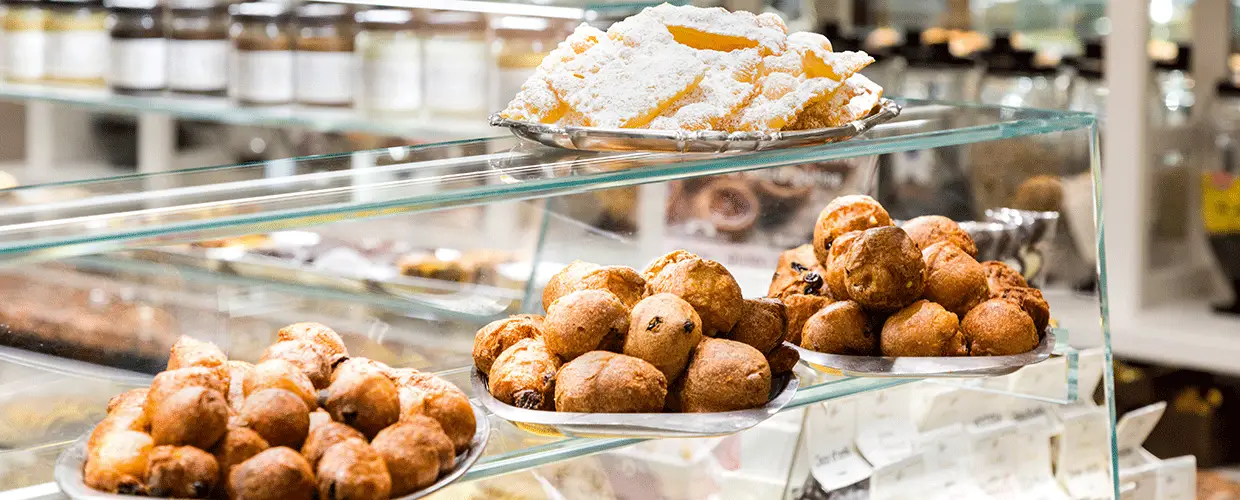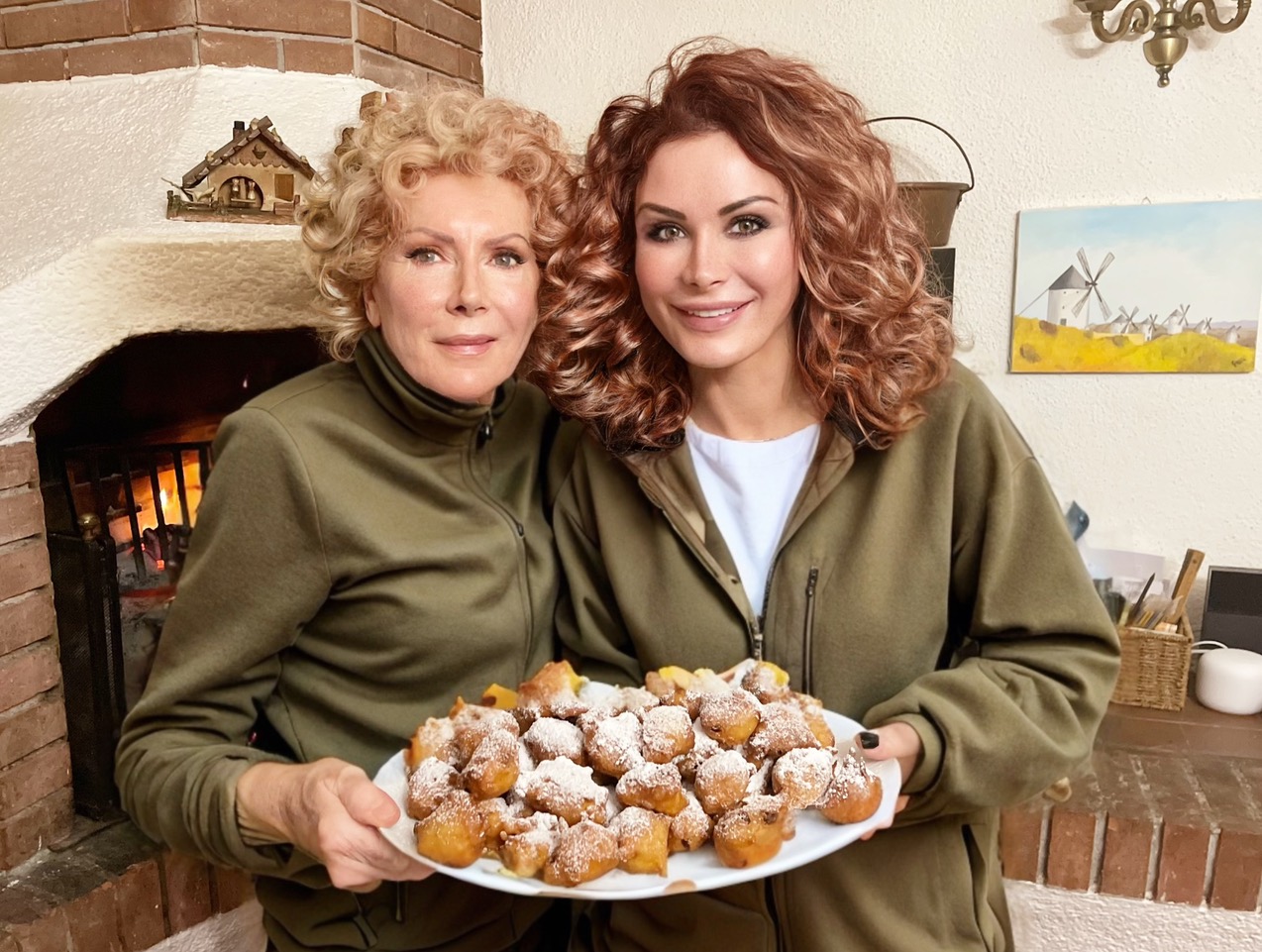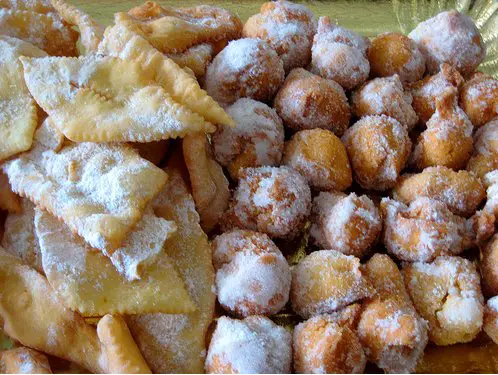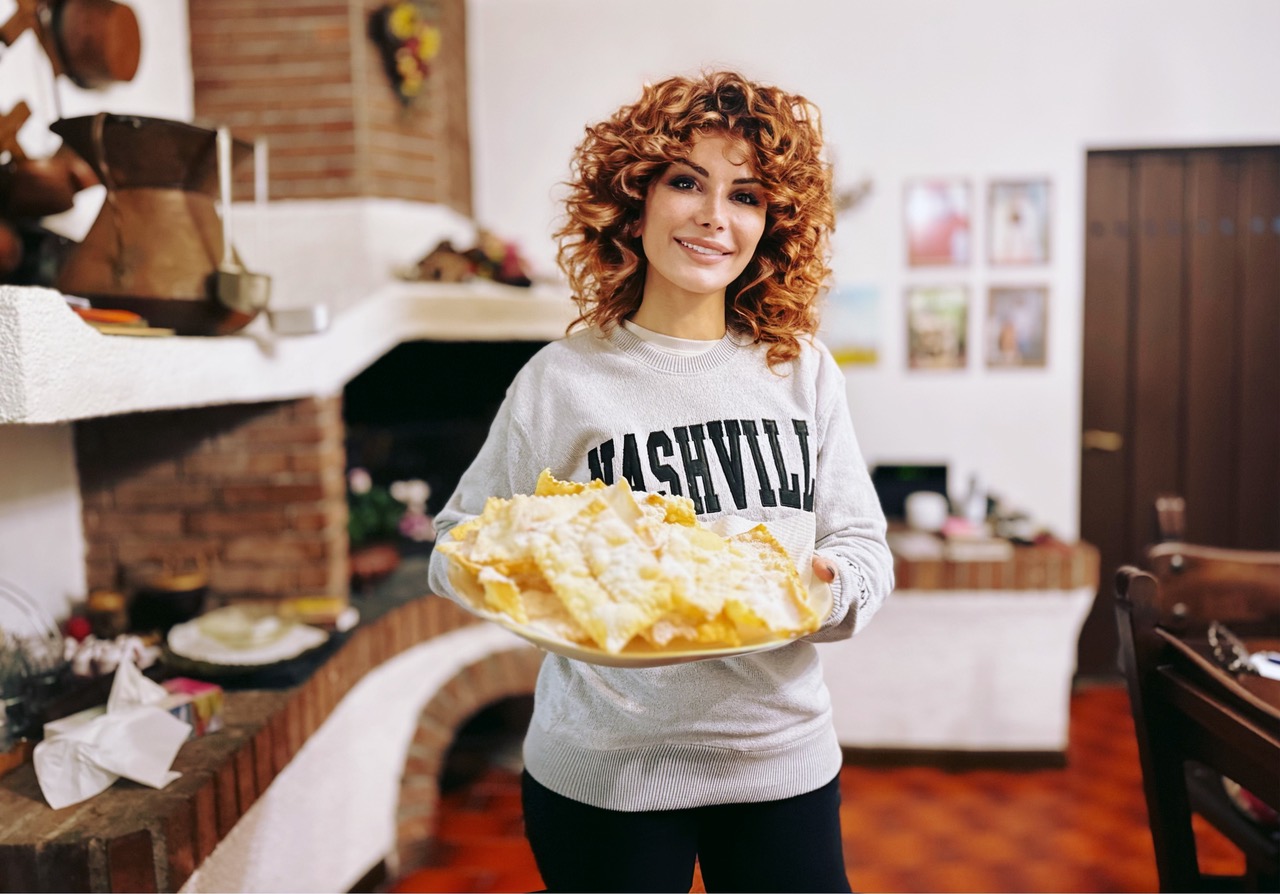Delicious delight of Crostoli e Frittelle
Carnevale has been in full swing since Valentine’s Day, bringing Venice to life with vibrant events and celebrations. This year’s theme, “Il Tempo di Casanova”, honors the 300th anniversary of Giacomo Casanova’s birth, adding romance and mystery to the festivities. The streets fill with elegant gowns, sparkling masks, and joyful laughter. Performers entertain, masked guests drift through canals on gondolas, and the festive energy is contagious. The crowds may be overwhelming, but the magic is undeniable—it’s an experience everyone should have at least once. Carnevale is deeply rooted in Venice, and its growing fame makes the bustling atmosphere an essential part of the tradition.
Carnevale, derived from the Latin “carne levare”, meaning “to remove meat,” historically marked the beginning of Lent, a period of fasting before Easter. Perhaps it’s this tradition of abstinence that leads Italians to indulge in an abundance of sweets before the season of restraint begins. We often joke in my family that if you take one type of food away from Italians, we will surely fill the void with something equally delicious.

And so, around this time of year, every café and Pasticceria, pastry store in Venice and all around in the Veneto and Friuli Venezia Giulia regions boasts dazzling displays of golden, sugar-dusted delights, irresistible to both locals and tourists: Crostoli e Frittelle, two traditional sweets made in Venice and the Veneto and Friuli Venezia Giulia regions for Carnevale. Known in Venetian dialect as Fritoe and Cristoi, they were so beloved by the Serenissima Republic of Venice, they were once named “The Official Sweets of the Serenissima.”
These sweets are more than just indulgent snacks; they are edible history, connecting generations through the joy of making and sharing them. Legends of Venice say that Casanova had a soft spot for both crostoli and frittelle, using them to charm his ladies. He would often say, “These crostoli are like love—fleeting but sweet. And just like love, they vanish too quickly. But the frittelle? They’re like passion, filling you up in an instant and leaving you wanting more.”

In my home, we make them almost every day with my mom, filling the house with the comforting aroma of frying dough. And it seems our close family can smell it from miles away, as more than ever, they stop by for tea, eager to enjoy a fresh batch of homemade treats.
Both are fried dough coated in sugar—simple to make and absolutely delicious. Almost every Italian family has a secret recipe for frittelle and crostoli, passed down through generations, each convinced that theirs is the best. Although both are fried, they are completely different.
The ”Frittelle” are deep-fried dough balls, typically dusted with powdered sugar or filled with custard, ricotta, or cream. Their tradition dates back to ancient Rome when frying dough was common during festivals. In Venice, frittelle di Carnevale are often filled with custard or ricotta, and even pistachio cream lately, garnished with candied fruits or raisins.

Crostoli, on the other hand, are light, crispy pastries, also fried and dusted with powdered sugar, enjoyed across Italy under various names. In Veneto, we call them crostoli, reflecting their crisp, crunchy texture.
Over time, variations of these treats have spread throughout Italy, each region adding its own twist to the name and recipe, making them a unique part of Italy’s culinary culture. But despite regional differences, these sweets symbolize Italian hospitality, tradition, and joy, and everyone in every family has a favorite.
These treats go by many names across Italy. Frittelle in Emilia-Romagna, they are castagnole, small fritters flavored with lemon zest and sometimes filled with jam or chocolate. In Naples, they are called zeppole, filled with custard and topped with a cherry, especially during the Feast of St. Joseph. In Trentino-Alto Adige, frittelle di mele feature apple slices in the dough, while in Lazio, frittelle di riso are made with rice, adding a chewy texture to the dough.

Also crostoli have different names depanding the region. In Rome, they are known as chiacchiere, meaning “chatter,” a fitting name for their airy texture that dissolves quickly, much like a lively conversation. In Piedmont, Liguria, and parts of Lombardy, they are called bugie, meaning “lies,” perhaps because their delicate, airy texture might trick you into thinking they’re just air. These are often thinner and crispier, sometimes flavored with lemon or orange zest. In Emilia-Romagna, they are called sfrappole, and in Tuscany, crostini di Carnevale, emphasizing their festive nature.
Wondering if you can find variations in the U.S.? Italian Americans have done a fantastic job of keeping traditions alive! While they may not be called crostoli or frittelle (since most immigrants came from southern Italy), you’ll find them under different names. Crostoli are often called chiacchiere or angel wings and are a bit crunchier than the Venetian version, while frittelle are typically known as zeppole—larger than their Venetian counterpart but just as delicious. These treats are enjoyed during celebrations like Carnevale or St. Joseph’s Day and can be found at many Italian bakeries across the country.
As for me, when I’m not in Venice, I make them at home using my mom’s recipe. She makes the best crostoli, with a delightful hint of anisette—so good they melt in your mouth—and incredible frittelle. I have to admit, I love them both equally!
So whether you’re in Venice savoring frittelle, in Rome nibbling on chiacchiere, or in Naples on in the USA delighting in zeppole, one thing is certain : Carnevale is a time for revelry, laughter, and, most importantly, delicious traditions.

And as I wander through the festive streets of Venice, soaking in the dazzling spectacle of masks, music, and merriment, I’m reminded that Carnevale is not just about the grandeur of the celebration—it’s about the simple, joyful pleasures that bring people together.
Making crostoli and frittelle with my mom, eagerly awaiting family to stop by for fresh treats, is what truly makes this time of year so special.
Buon Carnevale a tutti,
Giada

About Giada Valenti
Singer and songwriter Giada Valenti was born and raised in Venice, Italy. She is best known in the United States for her PBS music special From Venice with Love, which aired nationally in 2015, 2016, and 2017. In November 2017, she debuted as a headliner in Las Vegas with a concert at The Smith Center for the Performing Arts. In October 2018, she made her debut at Carnegie Hall in New York City, where she returned by popular demand in 2019. Another highlight was being asked by Andrea Bocelli to sing with him, at a concert benefitting his foundation. Her albums include And I Love You So, Italian Signorina, My Lullaby, and From Venice with Love. Giada is also a Tiramisu expert and has done cooking demos on television shows around the country making the famous Italian dessert. Giada has also been a co-host for several years for the Columbus Day Parade on ABC7 in New York.